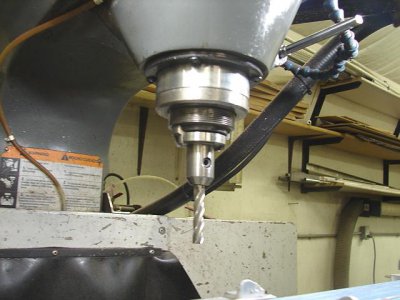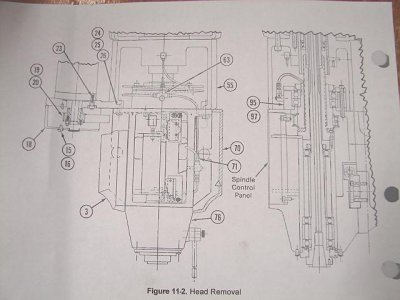
As you can see, I don't use the Erickson nut. I gundrilled the spindle and use a power drawbar. Like Jim said , the oil is coming from the quill, not the spindle......so I removed the flange on the bottom of the head and removed the felt wipe. I replaced it with a rubber O ring in hopes of controlling oil moving down the spindle. I ran this thing for about an hour......and still have oil dripping.
So I wrapped a piece of absorbent material around the threaded part of the spindle that is exposed. Now I have no steady drip, but rather more of a spray, like it is now slinging. I removed the absorbent band and it was dry.(???) Now I'm really scratching my head.
So I completely wipe down the spindle and everything under it and degrease it with some carb cleaner so it is absolutely dry. I started another stock and while it was running, I kept my eye on the quill and the spindle and noticed that dust was accumulating to the spots where the oil was seeping from between the quill and the nose cap. My question is how does it get there? According to all the information in my manual, the oiling system doesn't lube the spindle, only the quill.
As far as the drip goes, my wild guess would be that the oil originates from the gap at the nose cap, it runs down the side then under the face of the cap. When it goes downs to the threads, instead of slinging it, the rotating threads acts as an escalator, moving it back up to accumulate on the bottom face of the nose cap and when the volume of oil is big enough, gravity takes over.
Do you think it would be OK to shoot some silicone caulk between the nose cap and quill?



